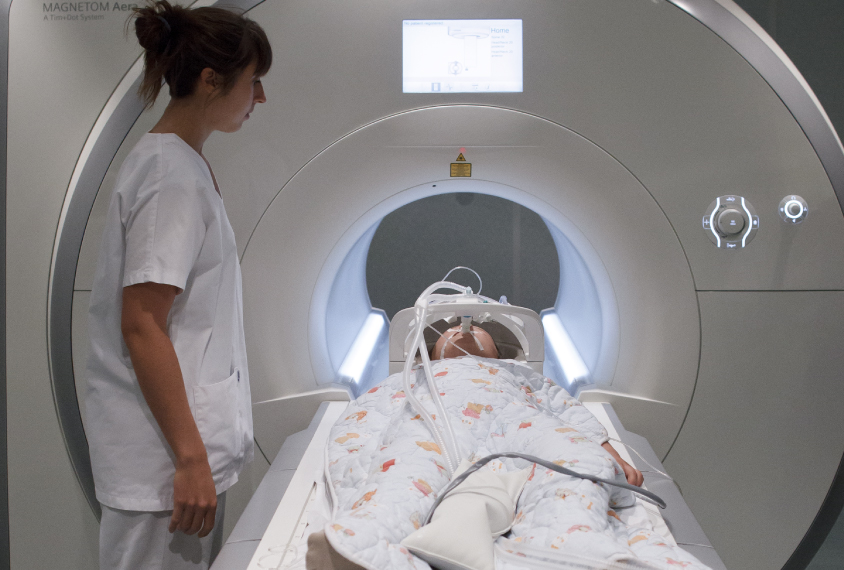
Anxious children’s head movement may mar brain-imaging results
Children with autism who are highly anxious tend to move their heads during brain scans and so may be excluded from important studies.
Children with autism who are highly anxious tend move their heads during brain scans. The movement can produce blurry images, leading researchers to omit these children from studies.
“If we’re excluding these data points, we’re excluding participants who have higher levels of anxiety,” says Meredith Pecukonis, an undergraduate student in Elizabeth Redcay’s lab at the University of Maryland in College Park. Pecukonis presented the unpublished results yesterday at the 2017 International Meeting for Autism Research in San Francisco, California.
Anxiety is common among children with autism. By one estimate, more than half of children with autism also have an anxiety disorder. Anxiety may be particularly common among those at the severe end of the spectrum: Nearly two-thirds of children with autism admitted to an inpatient psychiatry unit meet the criteria for an anxiety disorder, a 2014 study found.
Pecukonis and her colleagues analyzed functional magnetic resonance imaging (fMRI) scans from 20 children with autism aged 7 to 14 years (all but one of the children are boys). None of the children have a diagnosis of anxiety.
The scans each took an average of 30 minutes, during which the children interacted with a computer program, believing it was another child their age. The children read yes or no questions about their interests on a screen above their faces in the scanner, which they answered by pushing a button on a hand-held device. They wore earplugs during the scan.
Before the scan, each child completed a questionnaire that measures five types of anxiety: social anxiety, school anxiety, separation anxiety, general anxiety and somatic anxiety or panic. Social anxiety, separation anxiety and agoraphobia — a form of anxiety marked by panic in certain places or situations — are the most common types of anxiety among children with autism, each affecting more than one-third of children on the spectrum. The questionnaire asks children whether statements such as, “When I get frightened, I feel like passing out,” are true, sometimes true or false.
Children who report high levels of panic move more in the scanner than those who report low levels, as measured by the average frame displacement, the researchers found. Children with any of the other four types of anxiety do not show this trend.
Panic problem:
Parents also completed the questionnaire about their children. Their responses did not match those of the children. Parents’ reports of panic or any of the other forms of anxiety in their child is not associated with head motion.
Parents may not recognize when their child feels panic, because the signs of the condition, such as a racing heart, are largely internal, Pecukonis says.
The findings represent the latest hiccup for fMRI studies in autism. A 2012 analysis revealed that head motion can lead to spurious results in children with autism, making patterns of brain connectivity appear different than they actually are. New software helps researchers to minimize the effects of head motion when analyzing their data, but some scans are still too blurry to include.
The fact that anxiety is present in a subset of children with autism, particularly those with severe features, may skew brain-imaging studies toward the less severe end of the spectrum, Pecukonis says. Researchers should take extra steps to ensure that all children with autism feel comfortable during fMRI studies. Having the children rehearse lying still during practice scans in advance of the real scan may help, she says.
For more reports from the 2017 International Meeting for Autism Research, please click here.
Recommended reading

New organoid atlas unveils four neurodevelopmental signatures
Explore more from The Transmitter

The Transmitter’s most-read neuroscience book excerpts of 2025

Neuroscience’s leaders, legacies and rising stars of 2025


